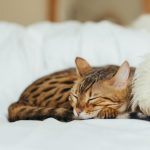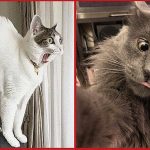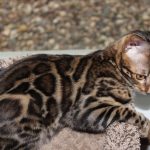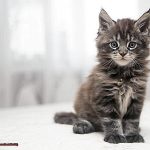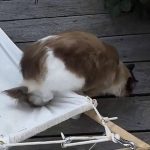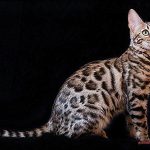Have you ever wondered why cats were considered sacred animals in ancient Egypt? It’s not just because they’re cute and cuddly (although that definitely helps). The answer lies in the ancient Egyptian religion, where cats played a significant role.
The goddess Bastet, daughter of the sun god Ra, was often depicted with the head of a lioness or a domestic cat. She was known as the goddess of home, fertility, childbirth, and women’s secrets. Keeping domestic cats in homes was believed to bring blessings from Bastet upon the family.
But it wasn’t just about their divine connection. Cats were also highly valued for their practical benefits. Farmers kept them around fields to protect crops from rodents and snakes, ensuring bountiful harvests. And let’s not forget their magical powers – cats were thought to be able to communicate with the spiritual realm and even foresee the future.
The Egyptians’ love for cats ran so deep that harming or killing one could result in serious consequences – even death. This reverence for felines has left a lasting legacy that we can still see today in our own fascination with these graceful creatures.
So next time you snuggle up with your furry friend or scroll through Instagram admiring adorable cat photos, remember that we owe a lot to the ancient Egyptians for their appreciation of these mysterious animals.
Symbolism of Fertility and Motherhood
In ancient Egypt, cats were not simply domesticated animals. They were revered and worshipped for their beauty, agility, and grace. The goddess Bastet, often depicted with a cat’s head, was believed to be their protector. But why were cats held in such high regard? One of the reasons was their symbolism of fertility and motherhood.
Female cats were seen as ideal representations of motherhood due to their nurturing nature towards their kittens. Moreover, they were known for producing large litters of offspring, which symbolized abundance and prosperity. This made them highly sought-after pets in Egyptian households.
Apart from their role as pets, cats played a crucial role in controlling the rodent population in Ancient Egypt. They were trained to hunt mice and rats that could damage crops and food storage facilities. Thus, they were considered protectors of the home and believed to bring good luck and prosperity to their owners.
The symbolism of fertility and motherhood associated with cats was further reinforced by their connection to the goddess Bastet, who was associated with fertility, childbirth, and nurturing. This emphasized the importance of cats in Egyptian culture.
Cats were also seen as symbols of rebirth and regeneration due to their ability to seemingly come back from the dead after being buried for a short period of time. This belief was tied to the Egyptian concept of the afterlife, where it was believed that the deceased would be reborn into a new life.
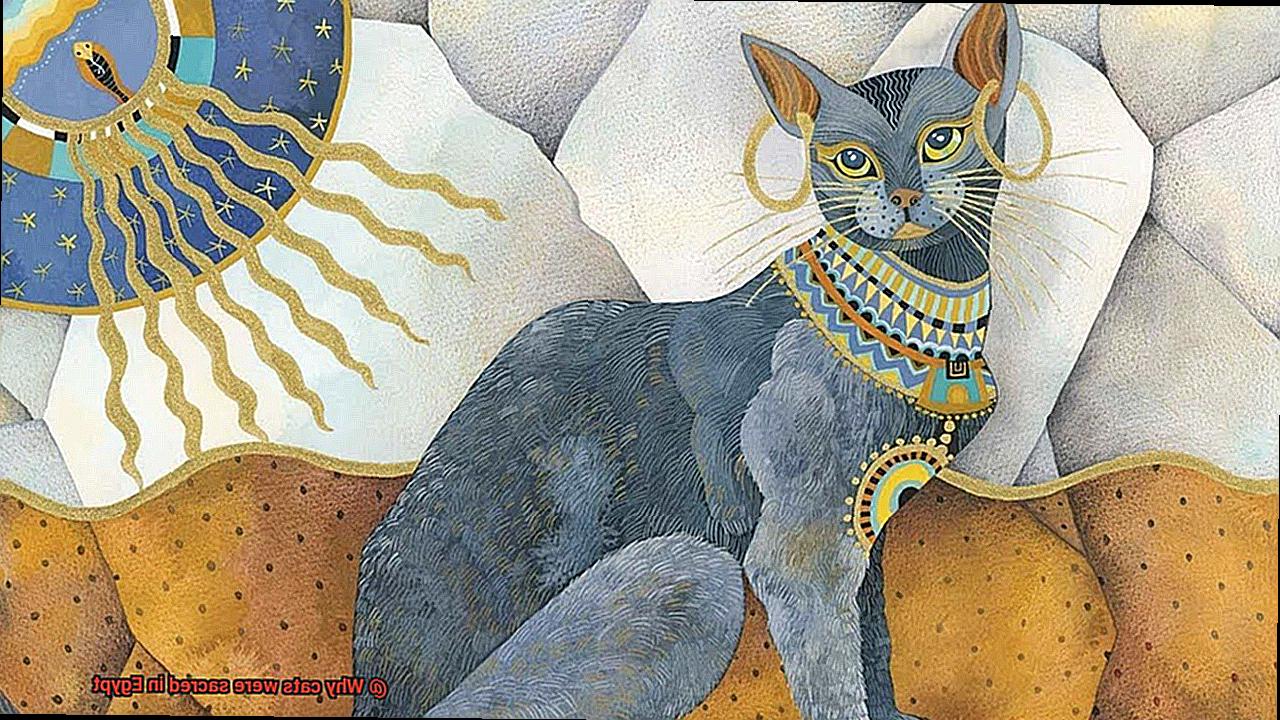
Beliefs in Magical Powers
Today, we are delving into the captivating world of the ancient Egyptians’ beliefs in magical powers and their unique connection with cats. As an expert on this topic, I am thrilled to share with you some mesmerizing insights into why cats were held in such high esteem in ancient Egypt.
The ancient Egyptians believed that cats possessed extraordinary abilities and were protectors of their homes. They revered felines for their ability to see things that humans couldn’t, making them invaluable allies in their daily lives. This belief in magic was central to the Egyptians’ relationship with cats, and it is evident in their art and mythology.
One remarkable example of cats’ association with magic was the goddess Bastet. Often depicted with the head of a cat, she was considered the defender of home and hearth. Bastet was also linked to fertility and motherhood, and it was believed that she had the power to bestow good health and protect against malevolent spirits. Her connection to cats further solidified the belief that felines had a supernatural presence.
Cats were so highly revered in ancient Egypt that they were even mummified when they died, similar to humans. The killing of a cat, even accidentally, was considered a severe crime punishable by death. The Egyptians’ respect for cats extended even to their mourning customs, as it was believed that if a cat died in your home, you would be expected to shave your eyebrows as a sign of grief.
In conclusion, the belief in magical powers played an essential role in why cats were so sacred to the ancient Egyptians. Through their association with gods and goddesses and their perceived ability to protect homes from evil spirits, cats became symbols of good fortune and prosperity. Their legacy endures to this day, as cats remain beloved pets worldwide.
Role in Controlling the Rodent Population
Imagine a time when rodents were a constant nuisance, invading homes, granaries, and public buildings. This was the reality for ancient Egyptians living along the Nile River. But they had a secret weapon in their battle against these pesky pests: cats.
While cats were initially kept as domesticated pets, their natural hunting instincts soon made them a valuable tool in controlling the rodent population. As trained and bred hunters, cats were put to work catching rodents in homes and other buildings. It wasn’t long before they became so good at their job that they were even used to protect grain stores from vermin.
As the rodent population declined thanks to the efforts of cats, Egyptians began to revere them as symbols of protection and good luck. Cats were believed to have the power to ward off evil spirits and protect homes from harm. This led to the widespread worship of cats as sacred animals.
Bastet, one of the most famous cat goddesses in Egyptian mythology, was considered the protector of households and mothers. Temples were built in her honor, and people would make offerings to her in hopes of receiving her blessings.
Thanks to their natural hunting instincts, cats played a crucial role in keeping the rodent population under control in ancient Egypt. This allowed people to live more comfortably and safely without worrying about pests invading their homes or workplaces.
Today, cats continue to play an important role in controlling rodent populations. They are used as natural pest control solutions in many places, from farms to warehouses to homes. In addition to being fierce hunters, they are also beloved companions that bring joy and comfort to those around them.
Worship and Revered Status
The worship and revered status of cats in ancient Egypt is a captivating topic that showcases the deep love and admiration Egyptians had for these feline creatures. Their reverence for cats was so strong that even accidentally killing one was punishable by death. But what made these animals so extraordinary?
Cats were not only known for their practical usefulness, such as catching mice and other rodents that carried diseases, but they were also seen as symbols of grace and poise. Egyptians admired their sleek and agile bodies, which embodied the qualities they held in high regard. In fact, cats were often depicted in art and literature as companions to gods and goddesses, with the goddess Bastet being one of the most prominent feline deities.
Interestingly, the worship of cats in ancient Egypt extended beyond domesticated felines. Wild cats such as lions and cheetahs were also worshipped, with statues and carvings of these big cats found throughout ancient Egyptian tombs and temples.
The worship of cats wasn’t just about their physical prowess or beauty; it also had spiritual significance. The Egyptians recognized the spiritual value of these beloved animals, making them an integral part of their culture and religion.
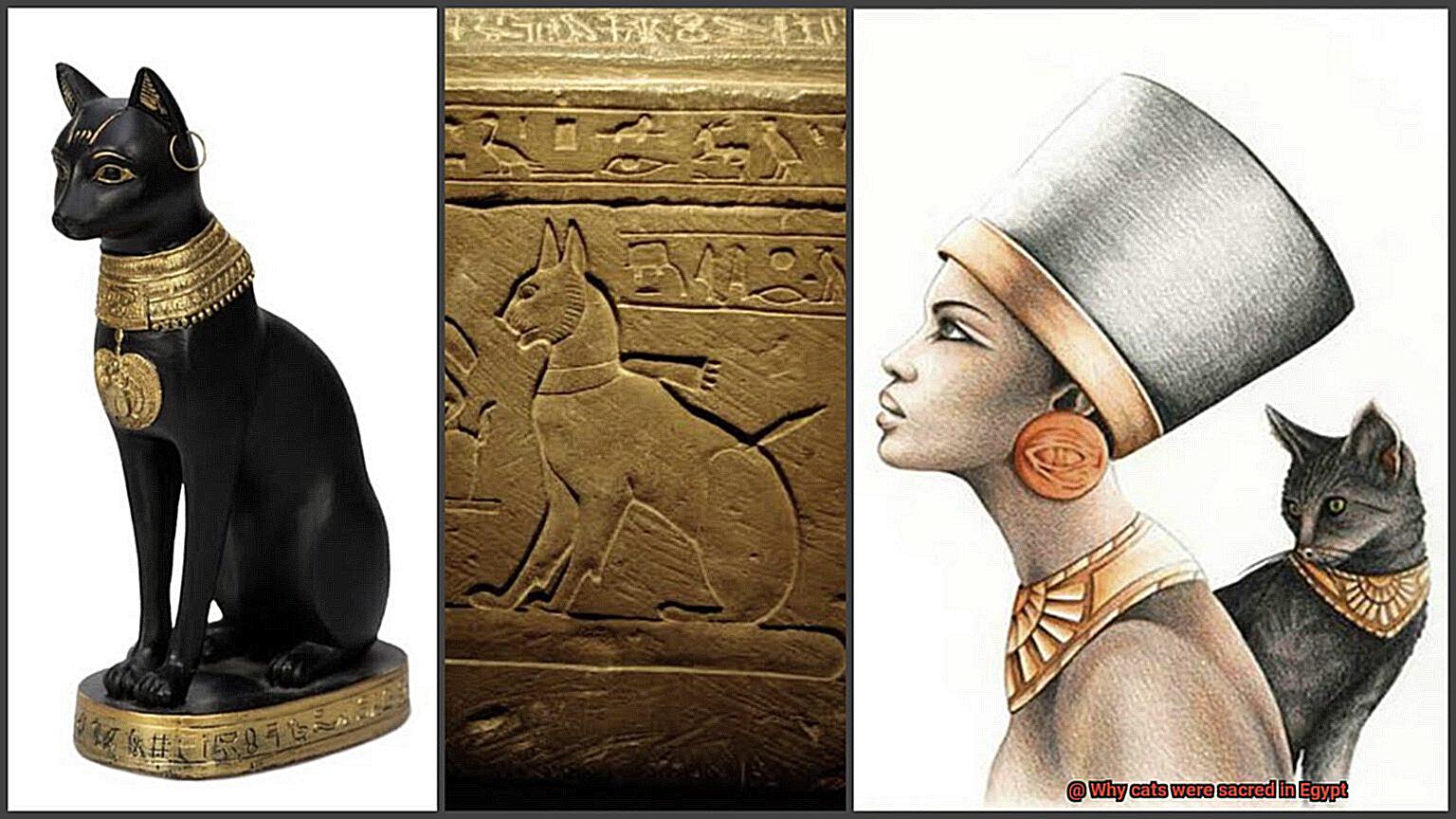
Treatment with Respect and Reverence
Cats were not just pets or mere companions in ancient Egypt; they were revered as sacred beings. The Egyptians believed that cats had divine powers and could bring good luck, protection, and prosperity to their homes. As such, these majestic felines were treated with great respect and reverence.
One reason why cats were valued so highly in ancient Egypt was due to their association with the goddess Bastet. She was the goddess of fertility, love, and protection, and many Egyptians believed that cats were her embodiment. This belief led to cats being worshipped as sacred beings and often depicted in art.
Beyond their spiritual significance, cats played a vital role in Egyptian agriculture by protecting crops from pests and vermin. Farmers kept cats in their homes or near their fields as protectors, ensuring that their crops were not destroyed by rodents and other pests.
The Egyptians’ treatment of cats was so significant that harming one was punishable by death. This law illustrates how much value the Egyptians placed on these creatures. They believed that harming a cat would bring misfortune upon the offender, and as such, they took great care to ensure that all felines were treated with respect and reverence.
Depiction of Bastet, the Egyptian Goddess of Cats
The ancient Egyptians held felines in high regard for many reasons, one of which was their association with the goddess Bastet, the protector of the home, women, and childbirth. Bastet was often depicted in art, statues, and other visual media as a woman with the head of a cat or as a full-bodied cat. Her image was a common sight in many Egyptian households and symbolized protection and good luck.
According to Egyptian mythology, Bastet was the daughter of the sun god Ra and had a multifaceted role in ancient Egyptian culture. She was venerated as the goddess of fertility and pleasure and held an essential role in music. However, her most significant role was that of protector. She once saved Ra from the poisonous serpent Apep by transforming into a cat and battling the snake. This act of bravery solidified her status as a revered goddess and her association with domesticated felines.
Bastet’s depiction in ancient Egyptian art is a testament to how highly cats were regarded in their culture. Her image as a cat represented grace, agility, and cunning – qualities that were highly valued by the Egyptians. Moreover, cats were considered sacred animals because they were believed to possess similar attributes as Bastet – they were seen as protectors of households and associated with good fortune.
In addition to her association with cats, Bastet was also linked to another feline deity named Sekhmet. Sekhmet was known as the goddess of war and destruction and was often depicted as a lioness. However, like Bastet, she too had a protective side, as evidenced by her role in healing and medicine.
The depiction of Bastet in ancient Egyptian art is not only significant because it represents the deep reverence with which cats were regarded but also because it symbolizes protection and luck. The goddess’ image was a common sight in many households, and her presence brought comfort to the people. The Egyptians believed that Bastet’s blessings would protect their homes and ensure good fortune.
Popularity as Pets among Families
For centuries, cats have been treasured as pets by families all over the world. But did you know that the ancient Egyptians were particularly enamored with these furry creatures? In fact, they held cats in such high regard that killing one was considered a serious crime punishable by death. Let’s explore why cats were so popular as pets among Egyptian families.
Firstly, cats were viewed as sacred animals and believed to bring good luck and protect households from evil spirits. This belief alone made them highly sought after as pets. However, it wasn’t just superstition that made them popular. Cats were also seen as symbols of fertility, grace, and agility. Parents believed that having a cat in the house would encourage their children to be active and nimble, just like their pet.
But beyond their symbolism, cats were also practical additions to daily life. They were excellent hunters and skilled at catching rodents and other pests that could carry diseases, making them valuable assets in households where food storage was necessary for survival. Additionally, they were used to protect crops from pests, making them an indispensable part of farming communities.
In ancient Egyptian society, cats became beloved companions in homes across the land. They even made appearances in artwork and sculptures, highlighting how deeply ingrained they were in daily life. Today, cats remain one of the most popular pets around the world.
Mummification After Death
Well, wonder no more. As an expert on the topic of mummification after death, I’m here to take you on a journey back in time to discover the fascinating process of mummifying cats in ancient Egypt.
To understand the significance of mummification for cats, it’s important to know that these furry creatures were highly revered in ancient Egypt. They were associated with the goddess Bastet, who was believed to protect women, children, and homes. Cats were often given as offerings to Bastet in temples, where they were allowed to roam freely around the grounds. When these sacred animals died, they were mummified and buried in special tombs.
The process of mummifying a cat was similar to that used for humans. It began with cleaning and preparing the cat’s body for preservation. The organs were then carefully removed, and the body was dried out using natron, a type of salt. This process ensured that the flesh would not decompose and would remain intact for eternity. Once the body had been dried out, it was wrapped in linen bandages and placed in a coffin or tomb.
But that’s not all. Mummified cats were often adorned with jewelry or other ornaments to show their importance and status as sacred animals. Some were even given elaborate funerals with mourners and priests present, highlighting just how much these creatures were cherished.
QzQ5AHZwhus” >
Conclusion
Cats were more than just furry companions in ancient Egypt – they were revered as sacred beings. These feline creatures were believed to possess divine powers that could bring good luck, protection, and prosperity to their homes. As a result, the Egyptians worshipped them as symbols of grace, agility, and cunning.
The goddess Bastet played a significant role in the worship of cats in ancient Egypt. She was considered the protector of households and mothers and was often depicted with a cat’s head. Many Egyptians believed that cats were her embodiment, which solidified their status as sacred animals.
Besides being associated with a goddess, cats also had practical uses in Egyptian agriculture. Farmers kept them in their homes or near their fields as protectors against pests and vermin. This practice ensured that crops were not destroyed by rodents and other pests.
The treatment of cats in ancient Egypt was so significant that harming one was punishable by death. The law illustrates how much value they placed on these creatures. They believed that harming a cat would bring misfortune upon the offender, so they took great care to ensure all felines were treated with respect.
Mummification after death was also common for cats in ancient Egypt. These furry creatures were highly revered and often given elaborate funerals with mourners present.
Today, cats continue to be beloved pets worldwide due to their playful nature, affectionate personalities, and ability to provide comfort to those around them. We owe a lot to the ancient Egyptians for their appreciation of these mysterious animals.
